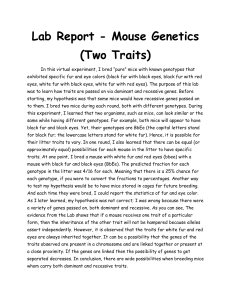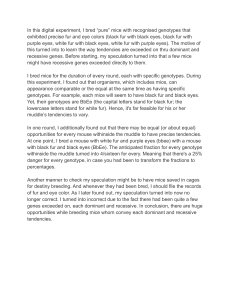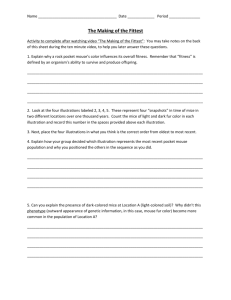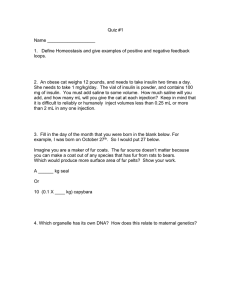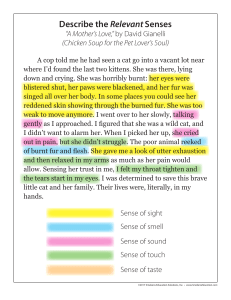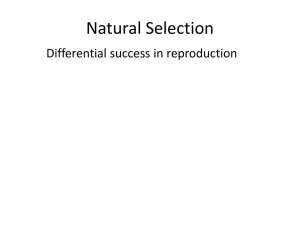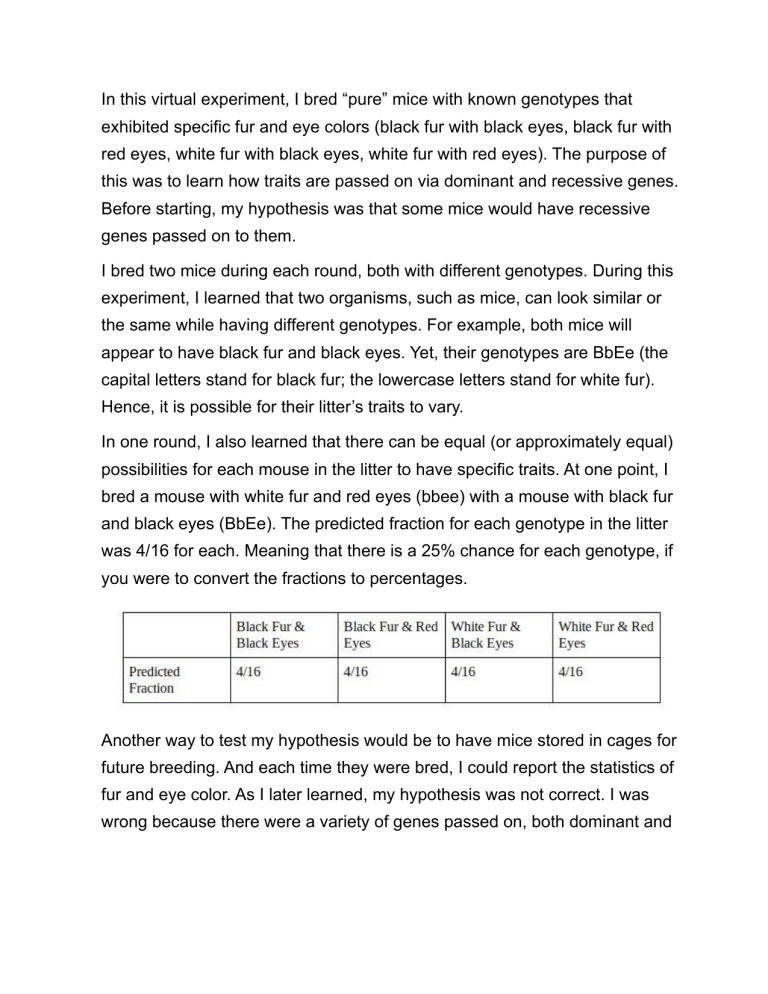
In this virtual experiment, I bred “pure” mice with known genotypes that exhibited specific fur and eye colors (black fur with black eyes, black fur with red eyes, white fur with black eyes, white fur with red eyes). The purpose of this was to learn how traits are passed on via dominant and recessive genes. Before starting, my hypothesis was that some mice would have recessive genes passed on to them. I bred two mice during each round, both with different genotypes. During this experiment, I learned that two organisms, such as mice, can look similar or the same while having different genotypes. For example, both mice will appear to have black fur and black eyes. Yet, their genotypes are BbEe (the capital letters stand for black fur; the lowercase letters stand for white fur). Hence, it is possible for their litter’s traits to vary. In one round, I also learned that there can be equal (or approximately equal) possibilities for each mouse in the litter to have specific traits. At one point, I bred a mouse with white fur and red eyes (bbee) with a mouse with black fur and black eyes (BbEe). The predicted fraction for each genotype in the litter was 4/16 for each. Meaning that there is a 25% chance for each genotype, if you were to convert the fractions to percentages. Another way to test my hypothesis would be to have mice stored in cages for future breeding. And each time they were bred, I could report the statistics of fur and eye color. As I later learned, my hypothesis was not correct. I was wrong because there were a variety of genes passed on, both dominant and recessive. In conclusion, there are wide possibilities when breeding mice whom carry both dominant and recessive traits.

